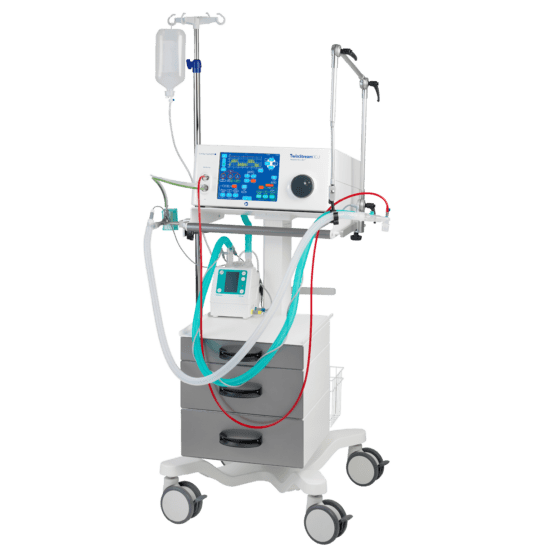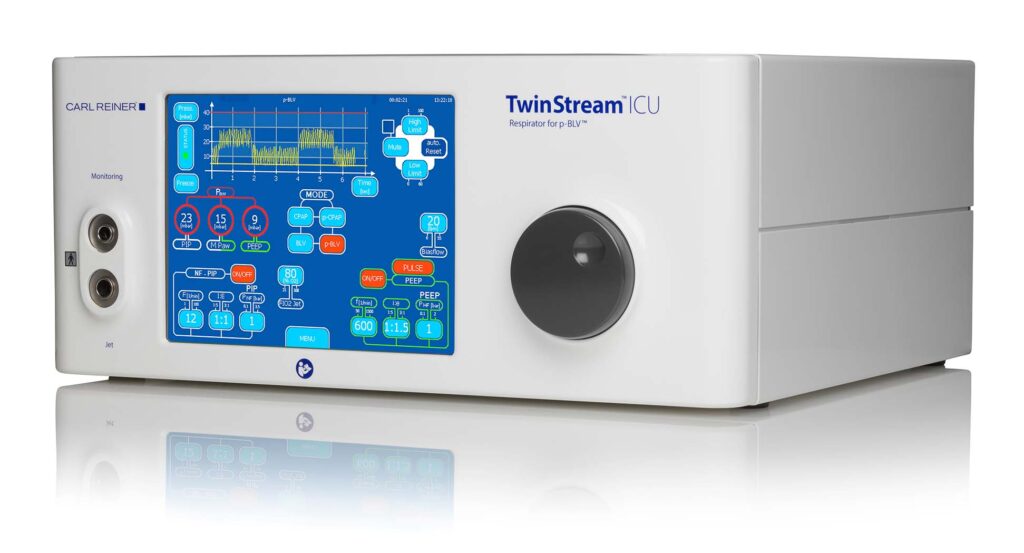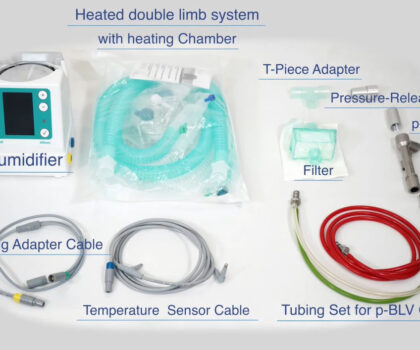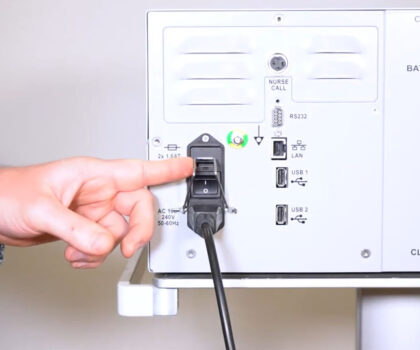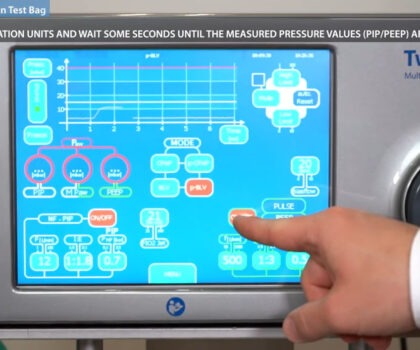TwinStreamTM ICU ventilator:
Respiratory disease
Pulsatile bilevel ventilation (p-BLVTM) has been in clinical use for more than 10 years now. It provides high-frequency ventilation (50-1500/min) at two different pressure levels and is an established ventilation approach for respiratory disease in neonates, infants and adults in many European hospitals.
Improved gas exchange
p-BLVTM is known to treat respiratory distress syndrome more successfully and more gently than ventilation at conventional breathing frequencies. Its pulsatile flow pattern enhances gas mixing in smaller airways and thus improves gas exchange.
Lower peak pressures
At the same time p-BLVTM generates lower peak pressures compared to conventional ventilation, thereby also reducing the risk of barotrauma and volutrauma.
When is p-BLVTM used?

Clinical indications:
- Acute Respiratory Distress Syndrome (ARDS)
- Acute Lung Injury (ALI)
- Ventilator-Induced Lung Injury (VILI)
- Corona Virus Disease (COVID)
- Severe Acute Respiratory Syndrome (SARS)
- Middle East Respiratory Syndrome (MERS)
- Thoracic trauma, multi-trauma
- Severe burn injuries
- As an alternative to ECMO
What is p-BLVTM ?
Pulsatile Bilevel Ventilation (p-BLVTM) combines pressure-controlled ventilation at normal frequency, e.g. 12/min, with high-frequency ventilation, at e.g. 600/min. The high frequency is 'superimposed' over the normal frequency.
In other words, p-BLVTMprovides high-frequency ventilation at two different pressure levels: an upper plateau for efficient CO2 elimination and a lower plateau for optimal oxygenation.
The expiratory phase is a completely passive process resulting from the natural recoil force of the lung tissue and the thoracic wall.
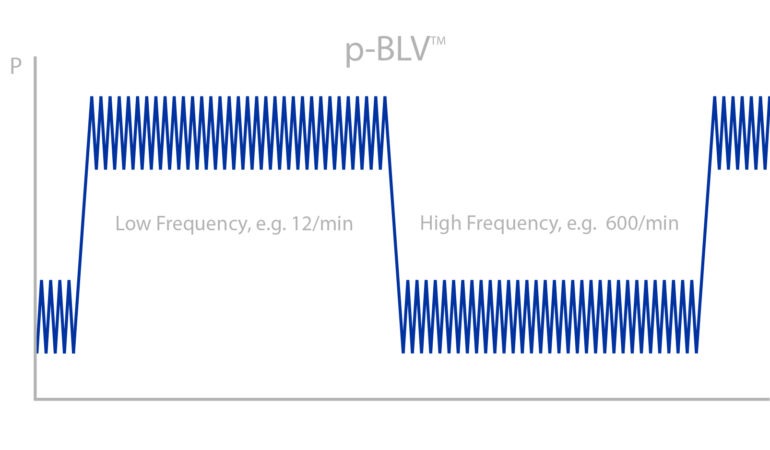
What are the clinical advantages of p-BLVTM?

Clinical advantages:
- Improved oxygenation
- Improved CO2 elimination
- Increased FRC
- Reduced atelectasis
- Lower peak pressures
- Reduced risk of barotrauma
- Reduced risk of volutrauma
- Haemodynamic stability
- Reinforced secretion clearance
Which other ventilation modes are available?
TwinStreamTM ICU videos:
- Address: Mariannengasse 17, 1090 Vienna
- Phone number: +43 1 402 62 51 0


